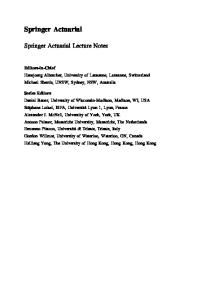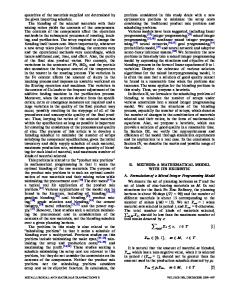Zinc Compounds Tuned to Model Other Materials
- PDF / 131,123 Bytes
- 1 Pages / 576 x 783 pts Page_size
- 71 Downloads / 377 Views
it shape memory, carbon nanotubes by themselves do not perform well enough to be used as a synthetic biomaterial, said the research team. However, the researchers are combining carbon nanotubes with different polymers to create a material they anticipate will perform as well as soft tissue. The team is also using results from this study to develop mechanically compliant electrical probes and interconnects.
Zinc Compounds Tuned to Model Other Materials P. Canfield, S. Bud’ko, S. Jia, and G. Samolyuk of Ames Laboratory and Iowa State University have discovered a family of zinc compounds that can be tuned, or manipulated, to exert some of the physical properties and behavior of other materials, ranging from copper to elements like palladium, to more complex electronic and magnetic compounds. Their versatility makes the zinc compounds ideal for basic research efforts to observe and learn more about the origins of phenomena such as
magnetism. The compounds, based upon the RT2Zn20 family (where R represents a rare-earth atom and T represents a transition metal atom), are mostly zinc and are “tuned” by substituting the R and T atoms. Canfield said, “We can make compounds for up to 10 transition metals, and for each of those we can include between seven and 14 rare earths. So that’s between 70 and 140 compounds.” As reported in the May issue of Nature Physics (p. 334; DOI:10.1038/nphys568), one of the compounds the researchers made, YFe2Zn20, turned out to be even closer to being ferromagnetic than palladium, a nearly ferromagnetic material that scientists have traditionally studied to better understand magnetism. Canfield describes palladium as a “runner-up” in terms of band magnetism—the magnetism of the common metals like iron, cobalt, or nickel. These metals become ferromagnetic at such high temperatures that it is difficult to study them in detail, so palladium is the next-best option.
“The problem is that as an element, palladium is a little hard to tune,” said Canfield. “There is one palladium site, and it’s not that versatile. For basic research as well as possible applied materials, you want compounds that allow for the manipulation of their properties. We can tune the rare earth-iron(2)-zinc(20) so we’re able to push these compounds even closer to ferromagnetism and try to understand the consequences of this,” he said. The tunability of the new family of zinc(20) compounds is allowing the researchers to approach the ferromagnetic transition point from where they hope to achieve another ambition—pushing the material to become ferromagnetic at very low temperatures by tweaking and tuning. “If we could do that,” said Canfield, “then we could actually witness the birth of this type of small moment ferromagnetism—instead of just before and after pictures, we could watch the whole film.”
News of MRS Members/Materials Researchers Pierre-Gilles de Gennes, 1991 Nobel laureate who made seminal contributions to solid-state, soft-matter, and polymer physics, died in Orsay at age 74 on May 18, 2007. A home-schooled gradua
Data Loading...











